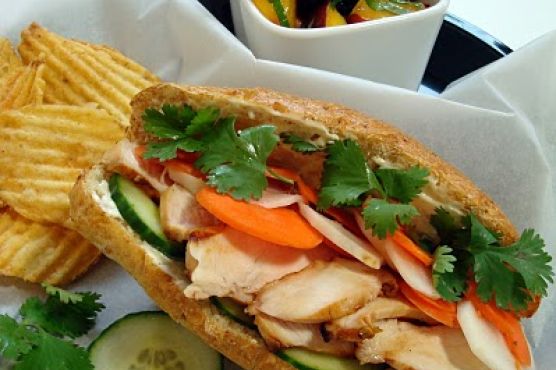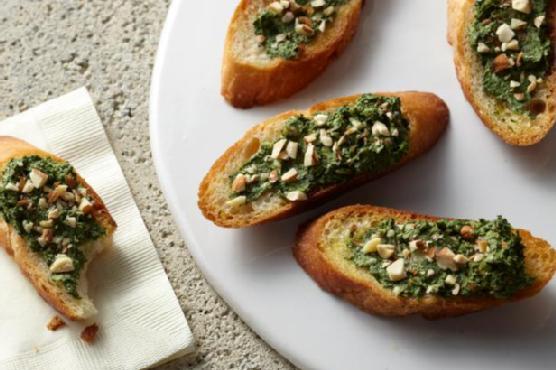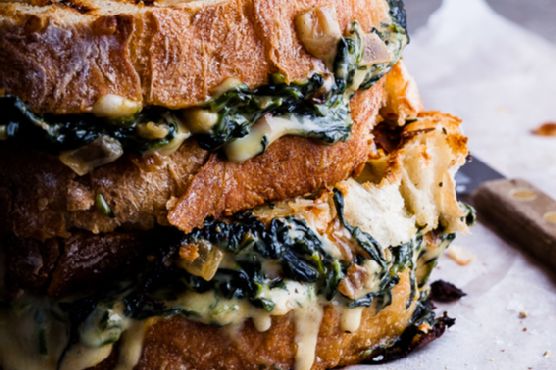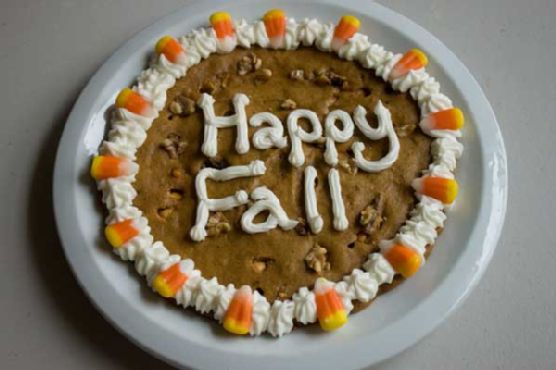Cream-Filled Chocolate Doughnuts
Cream-Filled Chocolate Doughnuts might be just the hor d'oeuvre you are searching for. One serving contains 488 calories, 12g of protein, and 15g of fat. For $1.68 per serving, this recipe covers 15% of your daily requirements of vitamins and minerals. This recipe serves 24. This recipe is liked by 45 foodies and cooks. A mixture of whole eggs, pastry cream, unsalted butter, and a handful of other ingredients are all it takes to make this recipe so yummy. From preparation to the plate, this recipe takes about 3 hours and 15 minutes. It is brought to you by Leites Culinaria. All things considered, we decided this recipe deserves a spoonacular score of 46%. This score is solid. Vanilla Cream Filled Cabernet Hot Chocolate Snowball Doughnuts, Vanilla Cream-Filled Doughnuts, and Vanilla Cream–Filled Doughnuts are very similar to this recipe.
Servings: 24
Preparation duration: 75 minutes
Cooking duration: 120 minutes
Ingredients:
3 envelopes (2 1/2 teaspoons each) active dry yeast
2 tablespoons plus 1 teaspoon cornstarch
3/4 cup plus 2 tablespoons Dutch-processed cocoa powder
2 large egg yolks
3 1/2 cups all-purpose flour
1 2/3 cups high-gluten flour
Pastry Cream
4 teaspoons salt
3 1/2 cups sugar
3 1/2 tablespoons unsalted butter, at room temperature, cut into tiny pieces, optional
1 vanilla bean, split in half lengthwise
6 cups vegetable oil, for deep-frying
About 1 cup water
2 large whole eggs
2 cups plus 1 tablespoon whole milk
Equipment:
bowl
whisk
sauce pan
knife
spatula
sieve
baking sheet
stand mixer
paper towels
ziploc bags
slotted spoon
pastry bag
Cooking instruction summary:
Make the pastry cream1. Sift together the cornstarch and half of the sugar into a bowl. Whisk in the whole eggs and egg yolks until well blended, thick, and smooth. Set aside.2. In a heavy-bottomed nonreactive saucepan, combine the milk with the remaining sugar. Using the edge of a small, sharp knife, scrape the seeds from the vanilla bean into the milk and then add the bean. Place over medium heat and bring to a boil, whisking occasionally. Remove from the heat.3. Whisking constantly, whisk about one-third of the hot milk mixture into the egg mixture. Pour this mixture into the remaining hot milk, whisk to combine, and return to medium-low heat. Cook, whisking constantly to keep the mixture from sticking and burning. Just before the mixture comes to a boil, it should thicken enough to coat the back of a spoon. As soon as the mixture boils, lower the heat slightly and continue to whisk for another 2 minutes to cook out the raw taste of the cornstarch and to allow the flavors to mellow.4. Remove from the heat and strain through a fine-mesh sieve into a clean bowl. Using a rubber spatula, fold in the butter, if using, a little at a time. (The butter gives the cream a little sheen.)5. Cover with plastic film, pressing it directly on the surface of the cream to keep a skin from forming, and let cool to room temperature. If not using immediately, cover tightly and refrigerate for up to 3 days.Make the doughnuts6. Lightly flour a nonstick baking sheet.7. In the bowl of a stand mixer fitted with the dough hook, combine the flours, cocoa powder, 1 1/2 cups of the sugar, and the salt. Add the yeast. Mix on low speed just until the ingredients are evenly distributed. Add the eggs and continue to mix while slowly adding the water. Because different flours absorb liquid at different rates, depending on the amount of natural moisture in the flour, the humidity of the kitchen, and so on, you won’t always need all the water. You want a dough that holds together, is well blended, and is not too wet or sticky, so if it has reached that point before you have added all of the water, don’t add the rest of it.8. Add all of the butter pieces and beat on medium speed for 4 to 5 minutes, or until the butter is completely incorporated into the dough. At this point, the dough should be smooth and elastic, yet slightly sticky to the touch.9. Turn the dough out onto the floured baking sheet and pat it into a round. Cover with plastic film and let the dough rise in a warm place for 1 hour, or until doubled in bulk.10. Lightly flour 2 rimmed baking sheets. Uncover the dough and remove it from the baking sheet. Divide the dough into 24 equal pieces. (Each piece should weigh about 4 ounces.) Using your hands, form each piece into a 2-inch round. As the rounds are shaped, place them on the prepared baking sheets, spacing them about 3 inches apart.11. Cover the baking sheets with plastic film and let the rounds rise in a warm place for 1 hour, or until doubled in volume.12. Line a large tray with a triple thickness of paper towels. Place the remaining 2 cups sugar in a resealable plastic bag or deep bowl. Pour the oil into a deep-fryer or a heavy-bottomed saucepan with a basket insert and heat to 320°F (155°C). Place the basket in the hot oil and add a few dough rounds to it. Fry, turning once with a slotted spoon or spider, for about 4 minutes, or until puffed and lightly colored. Using the slotted spoon, transfer the doughnuts to the paper towels to drain. Repeat with the remaining dough rounds.13. When the doughnuts are drained but still warm, add them to the bag of sugar and shake or toss to coat well on all sides.14. Spoon the Pastry Cream into a pastry bag fitted with a small plain tip. Working with one doughnut at a time, poke the tip into the side and gently force a squeeze of cream into the interior of the doughnut. Serve warm.
Step by step:
1. Make the pastry cream
2. Sift together the cornstarch and half of the sugar into a bowl.
3. Whisk in the whole eggs and egg yolks until well blended, thick, and smooth. Set aside.
4. In a heavy-bottomed nonreactive saucepan, combine the milk with the remaining sugar. Using the edge of a small, sharp knife, scrape the seeds from the vanilla bean into the milk and then add the bean.
5. Place over medium heat and bring to a boil, whisking occasionally.
6. Remove from the heat.
7. Whisking constantly, whisk about one-third of the hot milk mixture into the egg mixture.
8. Pour this mixture into the remaining hot milk, whisk to combine, and return to medium-low heat. Cook, whisking constantly to keep the mixture from sticking and burning. Just before the mixture comes to a boil, it should thicken enough to coat the back of a spoon. As soon as the mixture boils, lower the heat slightly and continue to whisk for another 2 minutes to cook out the raw taste of the cornstarch and to allow the flavors to mellow.
9. Remove from the heat and strain through a fine-mesh sieve into a clean bowl. Using a rubber spatula, fold in the butter, if using, a little at a time. (The butter gives the cream a little sheen.)
10. Cover with plastic film, pressing it directly on the surface of the cream to keep a skin from forming, and let cool to room temperature. If not using immediately, cover tightly and refrigerate for up to 3 days.Make the doughnuts
11. Lightly flour a nonstick baking sheet.
12. In the bowl of a stand mixer fitted with the dough hook, combine the flours, cocoa powder, 1 1/2 cups of the sugar, and the salt.
13. Add the yeast.
14. Mix on low speed just until the ingredients are evenly distributed.
15. Add the eggs and continue to mix while slowly adding the water. Because different flours absorb liquid at different rates, depending on the amount of natural moisture in the flour, the humidity of the kitchen, and so on, you won’t always need all the water. You want a dough that holds together, is well blended, and is not too wet or sticky, so if it has reached that point before you have added all of the water, don’t add the rest of it.
16. Add all of the butter pieces and beat on medium speed for 4 to 5 minutes, or until the butter is completely incorporated into the dough. At this point, the dough should be smooth and elastic, yet slightly sticky to the touch.
17. Turn the dough out onto the floured baking sheet and pat it into a round. Cover with plastic film and let the dough rise in a warm place for 1 hour, or until doubled in bulk.1
18. Lightly flour 2 rimmed baking sheets. Uncover the dough and remove it from the baking sheet. Divide the dough into 24 equal pieces. (Each piece should weigh about 4 ounces.) Using your hands, form each piece into a 2-inch round. As the rounds are shaped, place them on the prepared baking sheets, spacing them about 3 inches apart.1
19. Cover the baking sheets with plastic film and let the rounds rise in a warm place for 1 hour, or until doubled in volume.1
20. Line a large tray with a triple thickness of paper towels.
21. Place the remaining 2 cups sugar in a resealable plastic bag or deep bowl.
22. Pour the oil into a deep-fryer or a heavy-bottomed saucepan with a basket insert and heat to 320°F (155°C).
23. Place the basket in the hot oil and add a few dough rounds to it. Fry, turning once with a slotted spoon or spider, for about 4 minutes, or until puffed and lightly colored. Using the slotted spoon, transfer the doughnuts to the paper towels to drain. Repeat with the remaining dough rounds.1
24. When the doughnuts are drained but still warm, add them to the bag of sugar and shake or toss to coat well on all sides.1
25. Spoon the Pastry Cream into a pastry bag fitted with a small plain tip. Working with one doughnut at a time, poke the tip into the side and gently force a squeeze of cream into the interior of the doughnut.
26. Serve warm.
Nutrition Information:
covered percent of daily need















